Step 1: Start with a punchy insight
Grab a short, bold thought, maybe a LinkedIn post or comment that sparked a few likes or DMs. This becomes the foundation of your expanded piece.

For example:
“The smartest teams aren’t asking ‘How do we add AI?’
They’re asking, ‘If we remove this AI tool, what stops working?’
That’s the real adoption test.”
Open Grammarly Docs and paste it in. This is your starting point.
Step 2: Expand it with AI Chat
Now that your idea is on the page, ask Grammarly’s built-in AI Chat to do the heavy lifting. It will generate a well-structured draft that builds around your idea with proper tone and flow.
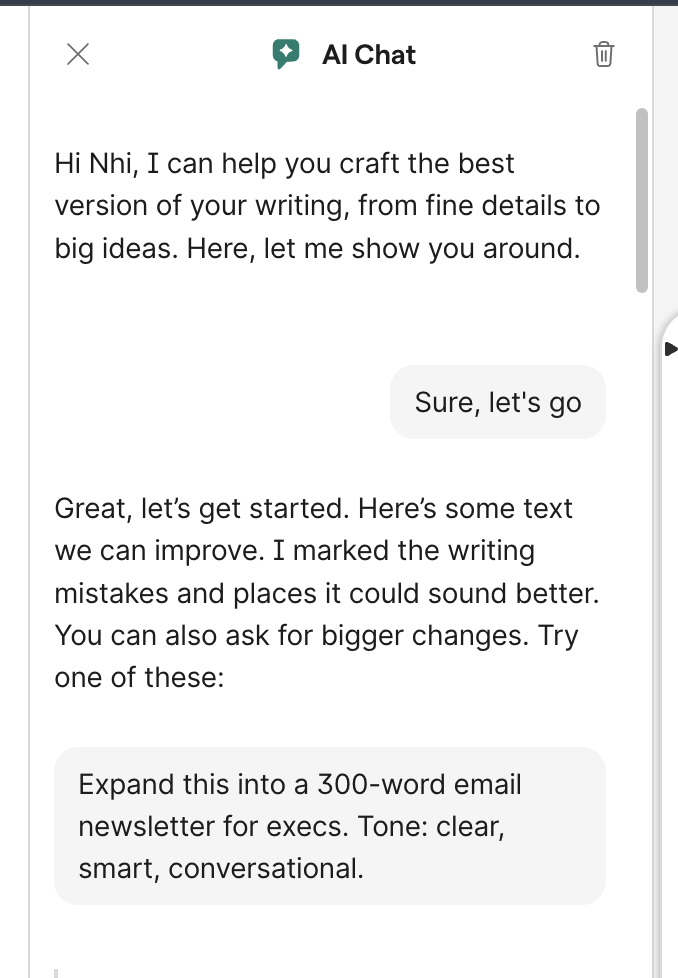
Try this prompt:
“Expand this into a 300-word email newsletter for execs. Tone: clear, smart, conversational.”
In seconds, you’ll have a draft that frames your idea with context, body, and takeaway—much easier than starting from scratch.
Step 3: Tailor it to your readers using Reader Reactions
Don’t just guess what your audience will care about, ask Grammarly to show you. Grammarly’s new AI Agent - Reader Reactions simulates how a specific group will interpret the piece.
Select “Business Leaders” or your intended audience and see:
- What will stand out most?
- What might they want to hear more about?
- What questions would they ask?
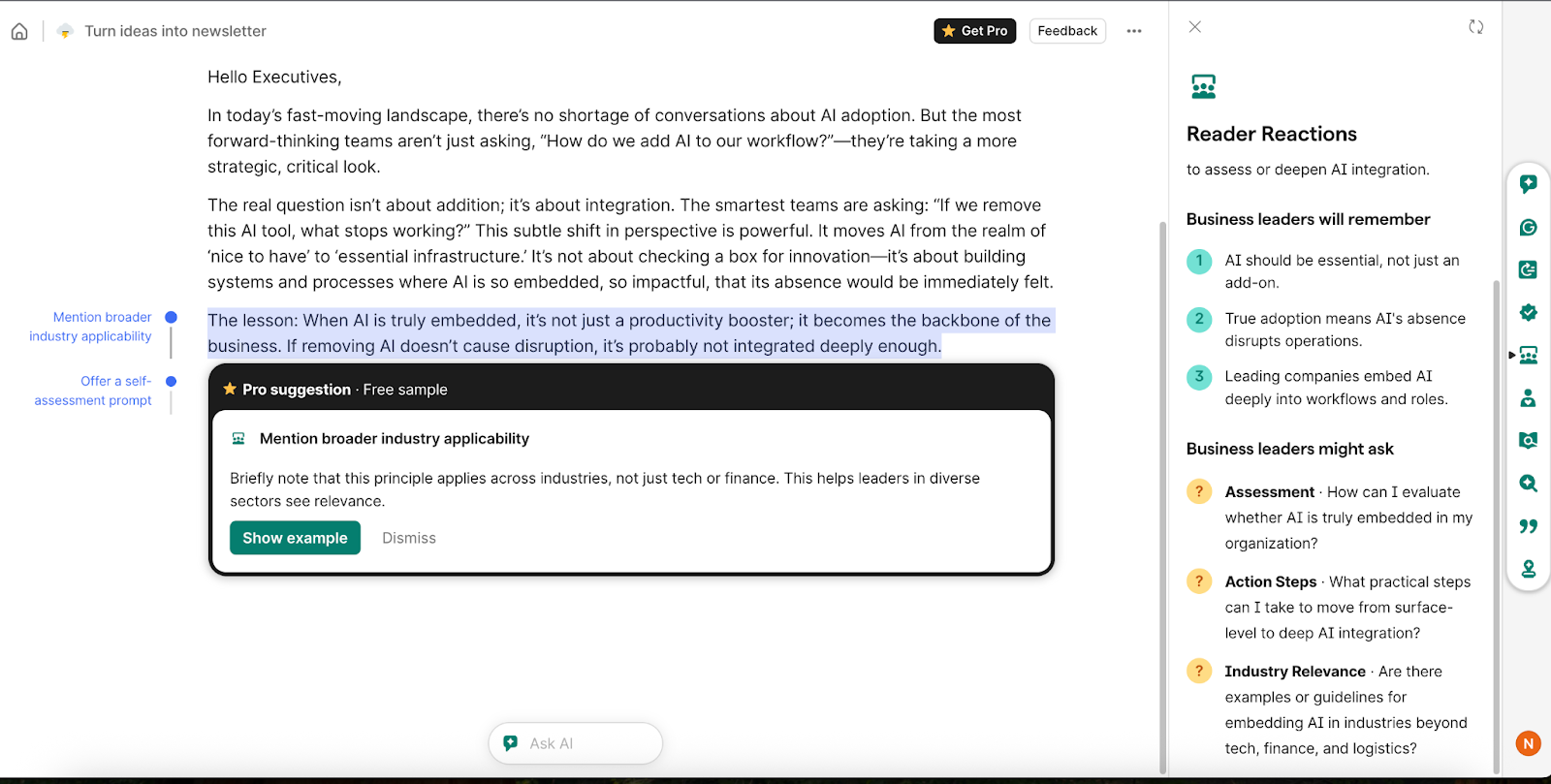
This gives you a content heatmap to guide your next revision.
Step 4: Add credibility
Based on the Reader Reactions in Step 3, this post can further benefit from real-world examples. Ask AI Chat to layer in concrete real-life use cases.
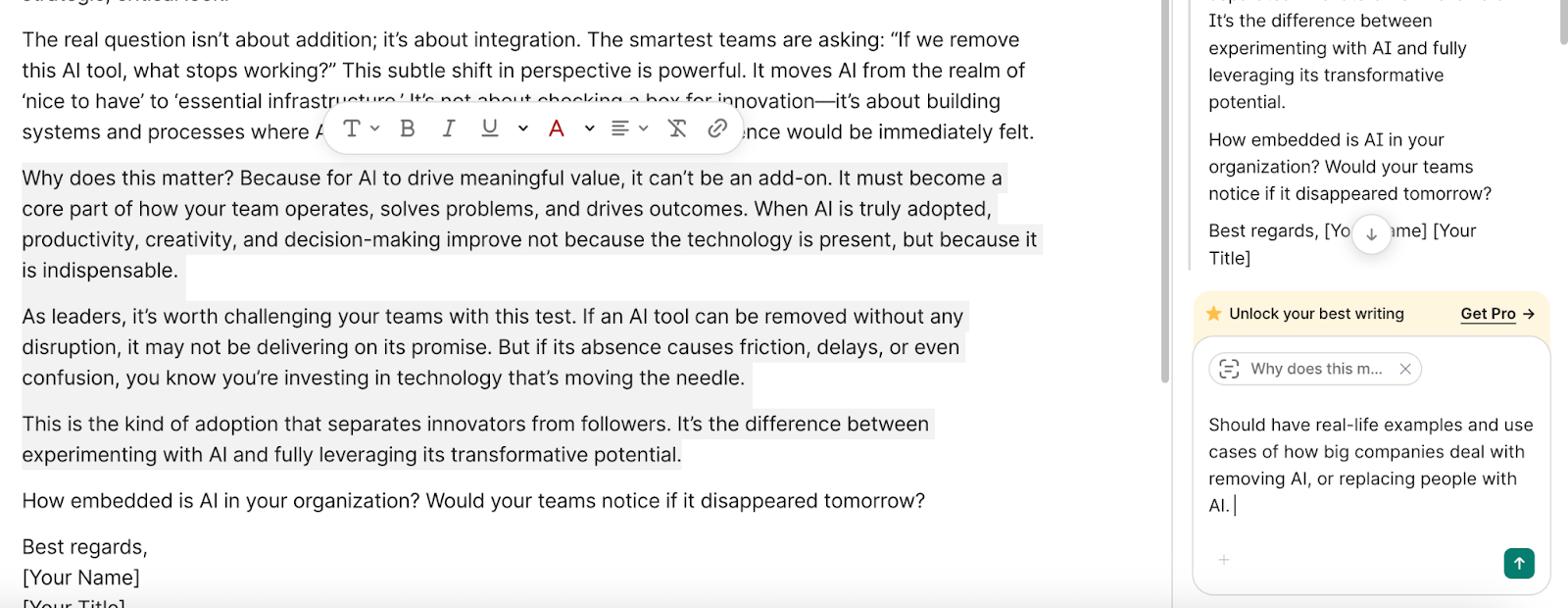
Try:
“Add real-life examples and use cases of how big companies deal with removing AI, or replacing people with AI.”
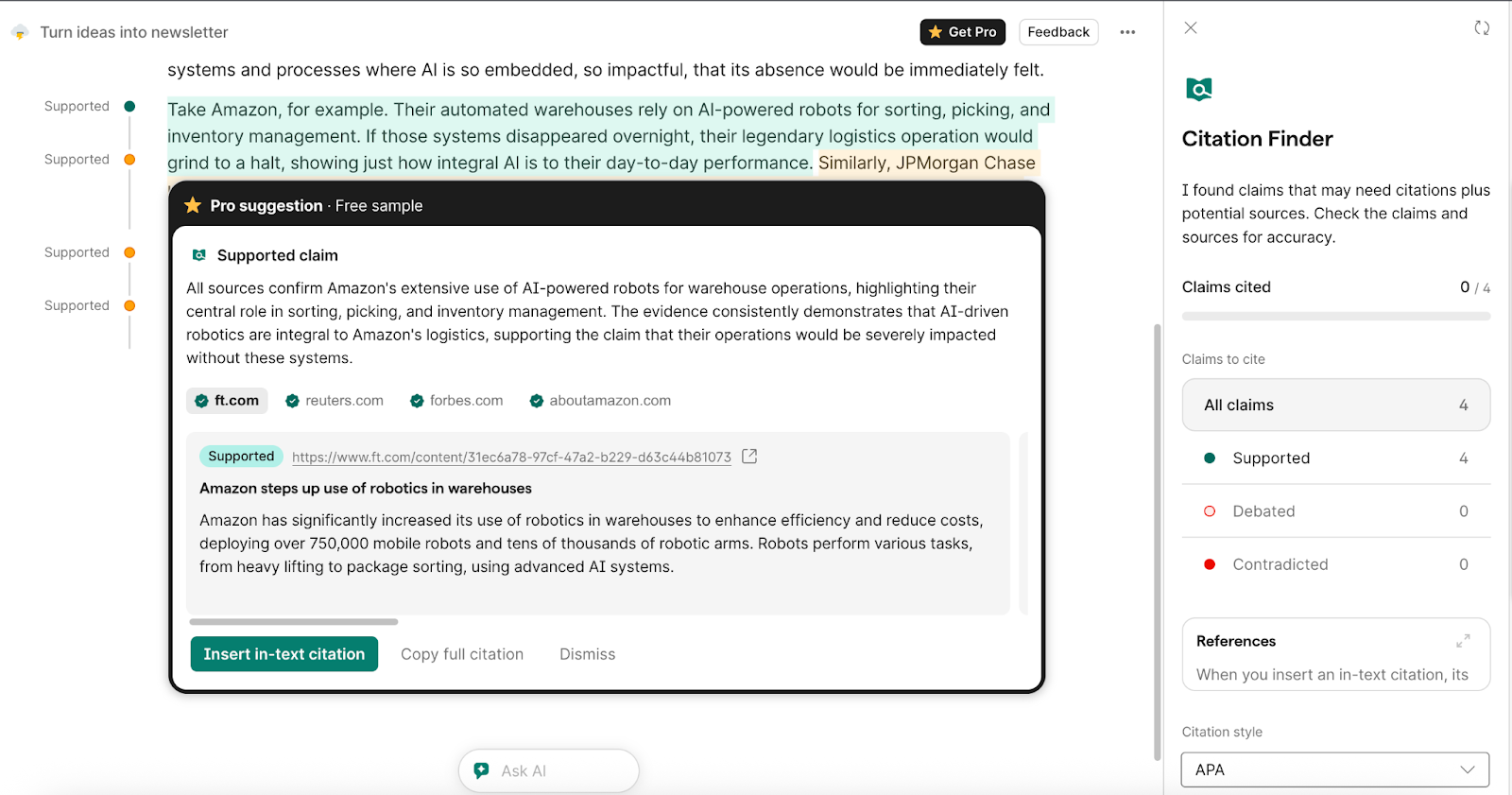
Once examples are in, use Citation Finder to validate the claims and pull reputable sources like FT, Reuters, Forbes, or company reports. This builds trust and depth.
Step 5: Adjust the voice with Humanizer and finalize
Finally, make it sound like you. Whether your tone is conversational, crisp, or executive-polished, Grammarly’s Humanizer agent helps you refine the final version.
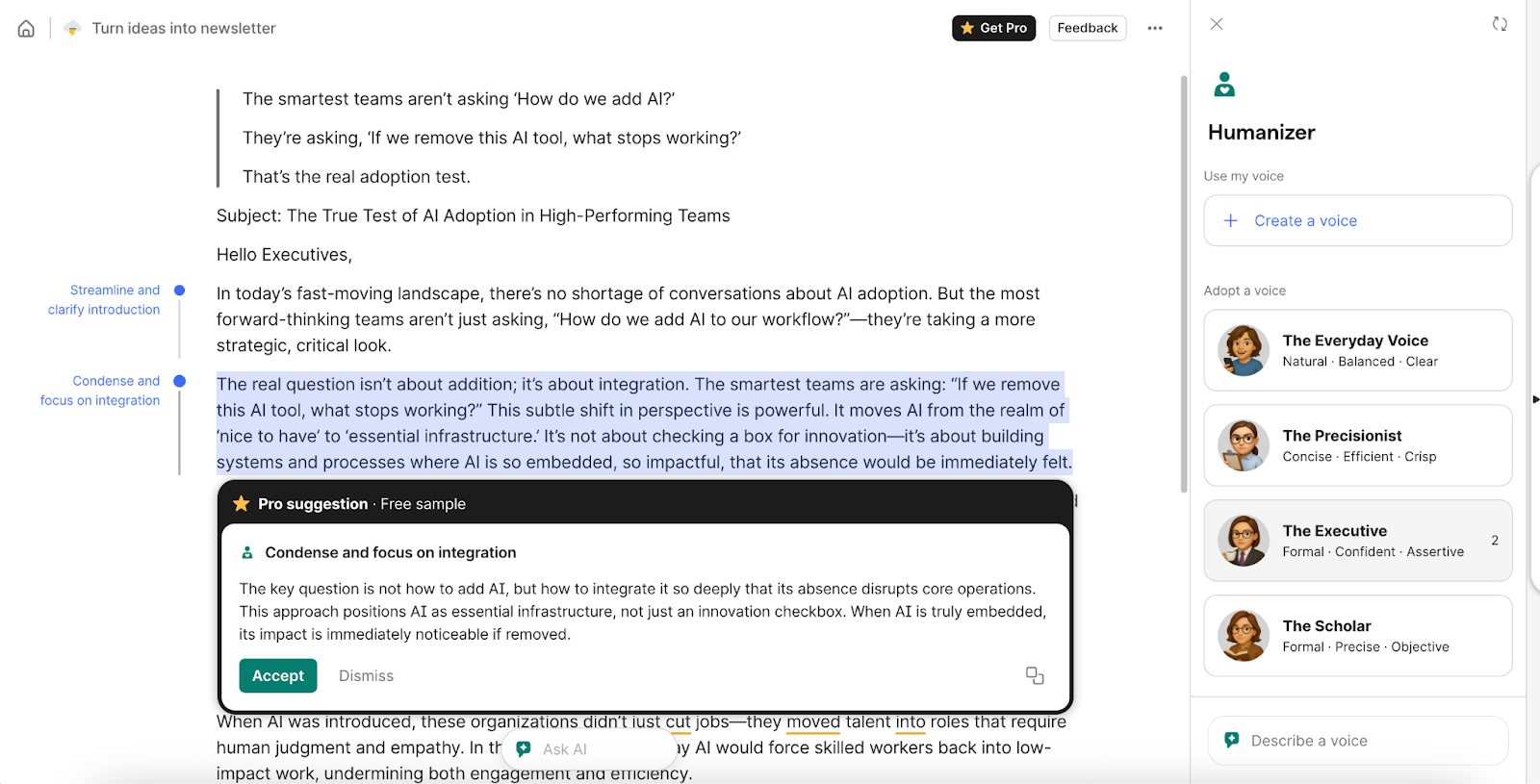
Select a voice (or create your own), then tweak for pacing, clarity, and warmth. This last pass ensures the piece reads naturally.
When you’re happy with the tone and structure, it’s ready to send as a newsletter, publish as a blog, or even share internally.
What else can you do inside Grammarly Docs?
- Rework internal strategy notes into client-facing updates
- Turn Slack rants into leadership reflections
- Transform voice memos into pitch decks or op-eds
- Remix AI-generated drafts into authentic, high-trust content

.png)

